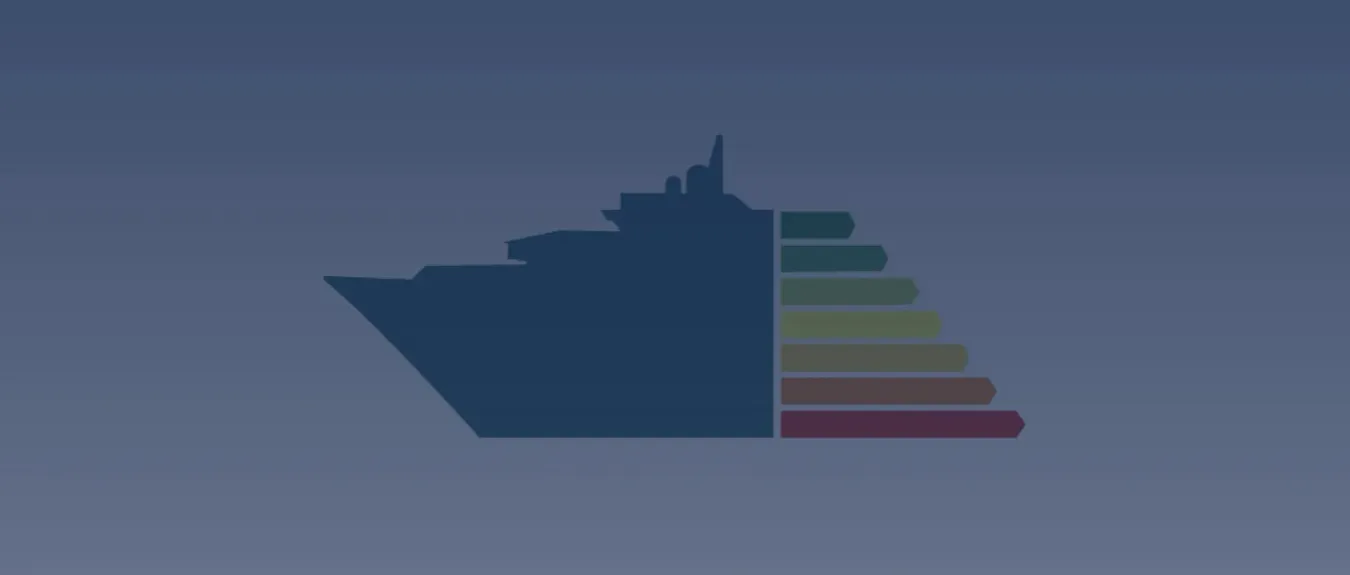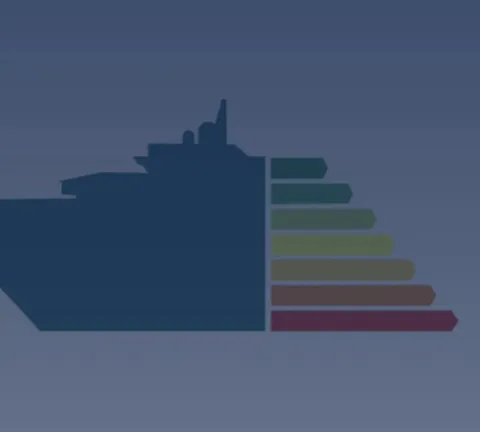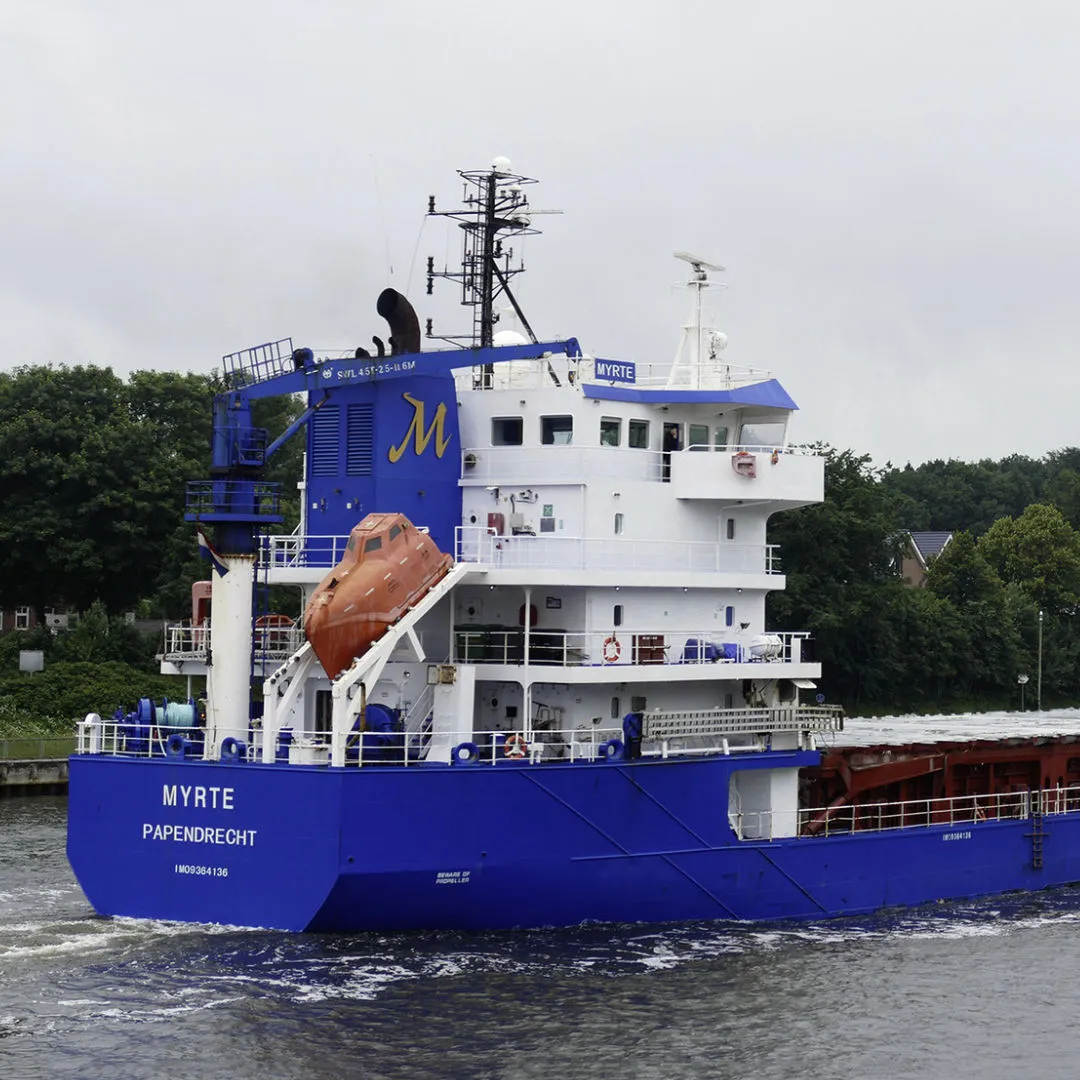
Carbon Intensity Indicator (CII) Services
Since January 1, 2023, the Carbon Intensity Indicator (CII) has become a mandatory measuring instrument under the IMO MARPOL convention. This indicator evaluates the efficiency of vessels with a Gross Tonnage (GT) exceeding 5000 when transporting goods or passengers. The CII value of your vessel, expressed in grams of CO2 per ton-mile, must be calculated annually. Explore the CII services from our selected partner, ranging from CII calculations with or without Computational Fluid Dynamics (CFD), an Express analysis to identify potential valuable adjustments to your vessel, to Lifecycle support such as fleet performance monitoring, technical advice, and technology exploration.

CII Services
Discover the Carbon Intensity Indicator (CII) services from our selected partner and optimize your vessel’s energy efficiency with accurate calculations and practical solutions.

CII Calculation
If a preliminary evaluation indicates that your vessel will meet the required Carbon Intensity Indicator (CII) value, a standard calculation without additional CFD analyses offers the quickest and most cost-effective solution.
This service involves collecting essential data from your vessel, establishing the reference value, and calculating the current CII value. If your vessel meets the standard, you can submit the report to a classification society such as DNV GL, Lloyd’s Register (LR), or Bureau Veritas (BV). Upon successful verification, you will receive confirmation of the registered value and the corresponding energy efficiency classification.
Calculation with CFD
If you require a precise CII assessment, this calculation service is the solution. This service evaluates the hydrodynamic performance of your vessel using Computational Fluid Dynamics (CFD) analyses.
As part of the CII services, Lifecycle support can also be offered. This service includes monitoring your fleet’s performance, technical advice on interpreting and applying analysis and evaluation results, and exploring new technologies.
Express Analysis
If your vessel is assessed with a low CII score or if you aim for a higher rating, you can rely on the Express Analysis. Without compromising on service speed, energy-saving solutions to improve your CII value will be pursued through CFD studies.
During this investigation, various Energy Saving Devices (ESDs) can also be studied, including a Pre-Duct, Pre-Swirl Stator (PSS), Propeller Boss Cap Fin (PBCF), and Twisted Rudder and Rudder Bulb, as well as techniques such as wind-assisted ship propulsion systems.
In Practice
As an example, a ship management company has utilized various services and products related to the CII.

CII Calculation
If a preliminary evaluation indicates that your vessel will meet the required Carbon Intensity Indicator (CII) value, a standard calculation without additional CFD analyses offers the quickest and most cost-effective solution.
Calculation with CFD
If you require a precise CII assessment, this calculation service is the solution. This service evaluates the hydrodynamic performance of your vessel using Computational Fluid Dynamics (CFD) analyses.
As part of the CII services, Lifecycle support can also be offered. This support includes monitoring your fleet’s performance, technical advice on interpreting and applying analysis and evaluation results, and exploring new technologies.
Express Analysis
If your vessel is assessed with a low CII score or if you aim for a higher rating, you can rely on the Express Analysis.
In Practice
As an example, a ship management company has utilized various services and products related to the CII.

Frequently Asked Questions
How is the CII value of your vessel assessed?
The CII value of your vessel is assessed on a scale from A to E, where A represents the highest degree of efficiency and E the lowest. This assessment includes various variables such as the type of vessel, nature of cargo, and emission data.
Every year, the CII requirements become stricter, with the International Maritime Organization (IMO) set to revise goals by 2026.
Which types of vessels does the CII apply to?
The CII applies to all cargo ships, RoPax ships, and cruise ships with a gross tonnage of over 5000. This includes bulk carriers, gas tankers, oil tankers, container ships, general cargo ships, and other similar vessels.
What data do I need to keep for the CII?
To calculate your vessel’s annual CII score and study improvement measures, it is essential to keep records of various data, including:
1. Navigation times: total, productive, and non-productive hours (ballast, at berth, at anchor), and distances traveled under safety or ice conditions.
2. Fuel consumption according to SEEMP Part II, per fuel type, including usage under safety or ice conditions.
3. Ship hull data for ice class correction factors and data before and after conversions or voluntary changes that alter the deadweight.
All data must be verifiable and consistent with what you have reported. A C rating is required, but a B rating is encouraged due to potential IMO regulations to be defined in 2026.
What are the consequences of a D or E rating in the CII?
If your vessel receives a D rating for three consecutive years or an E rating in just one year, this requires the development of a corrective action plan as outlined in Part III of the Ship Energy Efficiency Management Plan (SEEMP). This plan must then be submitted for approval.
If this scenario applies to your situation, an Express analysis provides a solution.
Consider studying improvement measures such as optimizing your propulsion system (such as a more efficient propeller, nozzle, and rudder), a more energy-efficient bow shape, and the implementation of Energy Saving Devices (ESDs), wind-assisted ship propulsion systems, and an air lubrication system.
How does the CII relate to the EEXI and EEDI?
The Carbon Intensity Indicator (CII) evaluates the efficiency of a vessel during the transportation of goods or passengers. On the other hand, the Energy Efficiency Existing Ship Index (EEXI) is a one-time assessment of the energy efficiency of existing vessels. In contrast to these, the Energy Efficiency Design Index (EEDI) focuses on assessing the efficiency of new vessels during their design phase.
What is the role of the SEEMP concerning the CII?
SEEMP Part III is a specific section within the Ship Energy Efficiency Management Plan (SEEMP) that focuses on the Carbon Intensity Indicator (CII). It specifically addresses (new) technical and/or operational measures to continuously improve the efficiency of your vessel.
